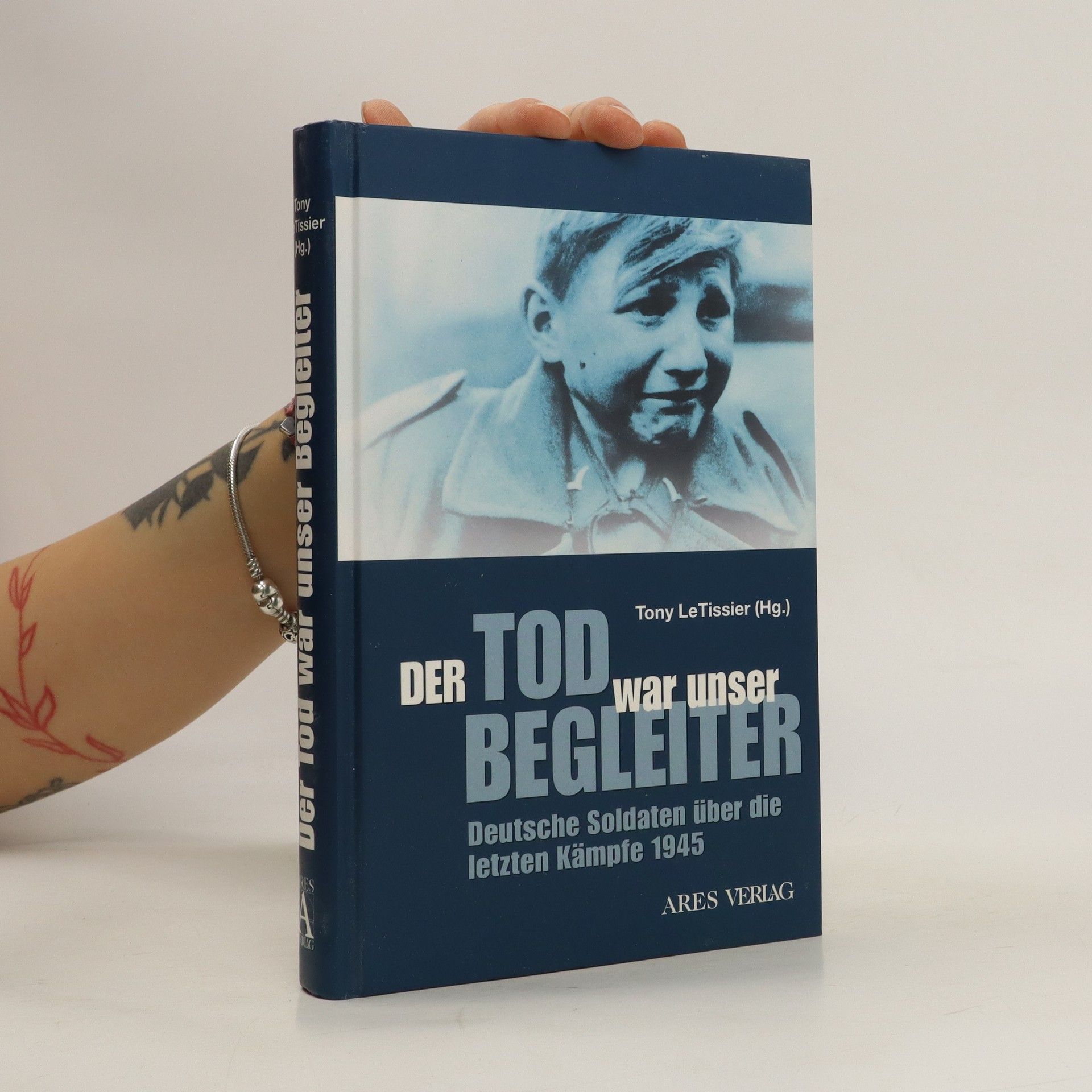2. Verdenskrig; USSR; Tyskland; Brückenköpfe; Küstrin;
Tony Le Tissier Bücher







Die Berichte dieses Buches bilden einen nicht unwichtigen Teil des eigentlichen Quellenmaterials zu vielen wissenschaftlichen Untersuchungen über die letzte Phase des Zweiten Weltkrieges auf deutschem Boden. Sie lassen die Betroffenen selbst zu Wort kommen. Der britische Historiker Tony LeTissier läßt in diesem Buch deutsche Soldaten über die letzten Monate, Wochen oder Tage des Krieges als Augenzeugen erzählen. Es sind erschütternde Berichte, die Zeugnis ablegen von der ungeheuren Brutalität dieser Kämpfe. Minderjährige Flakhelfer berichten ebenso wie alte Panzergrenadiere, wobei die Erlebnisberichte die gesamte Breite der Stimmungslage dokumentieren: Die erstaunliche Zähigkeit, mit der viele Einheiten den aussichtslosen Kampf bis zum Ende durchhielten, wird ebenso deutlich, wie die Verzweiflung und der Überlebenswille anderer. Dabei werden die Soldaten immer wieder Zeugen des oft grausamen Schicksals der Zivilbevölkerung, die ohne ihr eigenes Zutun in den Strudel der militärischen Ereignisse gerissen wird. Besonders interessant ist der Bericht eines Berliner Stabsoffiziers von den Kapitulationsverhandlungen mit den Sowjets, in dem die apokalyptische Stimmung unter den letzten Verteidigern dieser Stadt in berührender Weise erfahrbar wird.
Putting the record straight about the last years of Rudolf Hess's life
The frenzied last day so the Third Reich from the perspective of young German soldiers
A vivid depiction of the extraordinary circumstances of the Third Reich's final days
Operation "Berlin," the Soviet offensive launched on 16 April, 1945, by Marshals Zhukov and Koniev, isolated the German Ninth Army and tens of thousands of refugees in the Spreewald "pocket," south-east of Berlin. Stalin ordered its encirclement and destruction and his subordinates, eager to win the race to the Reichstag, pushed General Busse's 9th Army into a tiny area east of the village of Halbe. To escape the Spreewald pocket, the remnants of 9th Army had to pass through Halbe, where barricades constructed by both sides formed formidable obstacles and the converging Soviet forces subjected the area to heavy artillery fire. By the time 9th Army eventually escaped the Soviet pincers, it had suffered 40,000 killed and 60,000 taken prisoner. Teenaged refugees recount their experiences alongside Wehrmacht and Waffen-SS veterans attempting to maintain military discipline amid the chaos and carnage of headlong retreat. While army commanders strive to extricate their decimated units, demoralized soldiers change into civilian clothing and take to the woods. Relating the story day by day, Tony Le Tissier shows the impact of total war upon soldier and civilian alike, illuminating the unfolding of great and terrible events with the recollections of participants.
We Stormed the Reichstag
- 160 Seiten
- 6 Lesestunden
Set against the backdrop of World War II, the narrative follows Vassili Subbotin's transformation from an ordinary soldier during the Red Army's retreat in 1941 to a war correspondent witnessing the intense battles in Berlin in 1945. The story captures the harrowing experiences of war, the brutality of the final confrontations, and the pivotal moments that led to Germany's defeat, highlighting the personal and historical significance of Subbotin's journey through these tumultuous years.